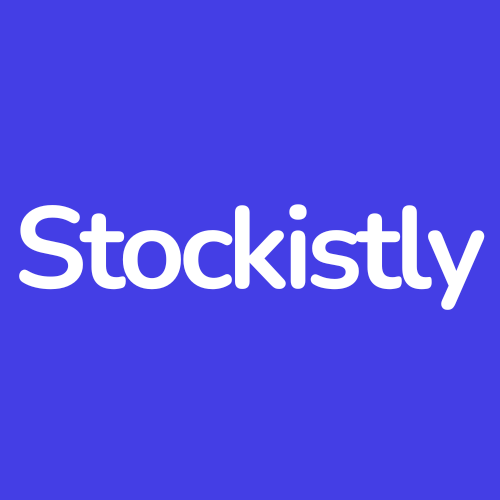
NearSt
NearSt turns online shoppers into in-store customers.
Customers
Founded
Company Size
App Installs
App Reviews
Average Rating
What is {listing}?
NearSt turns online shoppers into in-store customers. As the world's leading local inventory feed solution they help retailers to show their in-store products to nearby customers on the web's biggest platforms.
Founded in 2015 by Max Kreijn and Nick Brackenbury in London, today NearSt is a global Google Partner and part of Meta's Commerce Acceleration programme and works with retailers across the county. Today NearSt provides the infrastructure helping thousands of retailers display their live in-store stock online.
Their technology can link into any inventory management or point of sales system with just a few lines of code and automatically sends the store's inventory information to places like Google, Facebook, and Instagram for local shoppers to discover. Their technology is now integrated into over 130 stock management systems covering over 800,000 retail locations globally, and processes over 1B lines of stock daily.
NearSt turns online shoppers into in-store customers. As the world's leading local inventory feed solution they help retailers to show their in-store products to nearby customers on the web's biggest platforms.
Founded in 2015 by Max Kreijn and Nick Brackenbury in London, today NearSt is a global Google Partner and part of Meta's Commerce Acceleration programme and works with retailers across the county. Today NearSt provides the infrastructure helping thousands of retailers display their live in-store stock online.
Their technology can link into any inventory management or point of sales system with just a few lines of code and automatically sends the store's inventory information to places like Google, Facebook, and Instagram for local shoppers to discover. Their technology is now integrated into over 130 stock management systems covering over 800,000 retail locations globally, and processes over 1B lines of stock daily.
What makes {listing} different than competitors?
NearSt stands out from other similar eCommerce tools by focusing specifically on connecting customers with local retailers. Unlike traditional eCommerce platforms that cater to larger online stores, NearSt targets local businesses, helping them digitize their storefronts and reach nearby customers. It emphasizes the importance of supporting local communities and businesses by bridging the gap between online and offline shopping experiences.
NearSt's real-time inventory feature allows customers to discover products available nearby, fostering a sense of immediacy and convenience that is unique to local shopping experiences. This localized approach sets NearSt apart from other eCommerce tools focused on broader markets.
What metrics is {listing} going to improve for my eCommerce store?
NearSt enhances eCommerce metrics by boosting in-store foot traffic and local inventory visibility. By integrating real-time local product availability online, it increases store visits and sales conversions. This real-time data improves stock management and reduces inventory holding costs, enhancing customer satisfaction and driving higher sales for retailers.
Who has to manage {listing} and how long does it take to setup?
In a team, the marketing and sales departments would primarily use NearSt to promote local products and reach nearby customers effectively. They would leverage its features to showcase products, drive sales, and enhance the customer shopping experience through the platform.
Setting up NearSt can vary in complexity depending on the size of the business and the extent of products and inventory to be digitalized. For small retailers, the setup process can be relatively quick and straightforward, involving tasks like creating an account, uploading product information, and configuring store details. Larger projects may require more time and resources to ensure a seamless integration with existing systems and optimize the platform for maximum impact.
Is {listing} right for my store?
NearSt is ideal for local businesses such as boutique stores, independent retailers, and specialty shops looking to increase their online presence and attract nearby customers. It caters well to businesses aiming to strengthen their community ties, offer convenient shopping options, and showcase their unique products to a broader audience.
On the other hand, businesses heavily reliant on extensive shipping logistics or those not focused on local customer engagement may find NearSt less beneficial compared to eCommerce platforms geared towards broader markets.
Sustainability status
See {listing} in Action
Features
- Google Local Listings
- Google See Whats In Store
- Google Local Inventory Ads
- Meta Commerce Catalog
- Website Product Locator
- Website Seach Widget
- Product Reservations
- Localized Checkout Fields
{listing} Pricing
£29 / month
• Up To 3 Locations
• Up To 2,500 SKU Location
• Enhanced Local SEO
• Automatic Setup
• Inventory Management
Get A Quote
- Everything in Lite
- Up to 100 Locations
- Up to 5,000 SKU Location
- Dedicated Customer Success Manager
- Personal Onboarding
Get A Quote
• Everything In Advanced+
• Up To 250 Orders
• Unlimited SKU Location
• Dedicated Customer Success Manager
• Personal Onboarding
We do our best to keep pricing information up to date, but please do check the software partner's own website for the most up to date pricing information.
{listing} Alternatives

Effortlessly sync, optimize, and grow your online store with an all-in-one product feed management solution!

An eCommerce back-in-stock & pre-order alerts tool that adds a “Notify me” button, captures demand, and automatically messages shoppers via email/SMS when products return—recovering sales on autopilot.

Back-in-stock alerts for Shopify that capture waitlists and automatically notify customers via email, SMS, Messenger, and web push to recover lost eCommerce sales.

A back-in-stock notifications app for Shopify that captures waitlists and automatically alerts customers via email/SMS when items are restocked to recover lost eCommerce sales.

Supercharge your eCommerce growth with an all-in-one AI platform for smarter sales, seamless insights, and effortless optimization.


